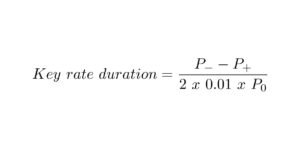What is the K-Ratio?
A K-ratio valuation tool looks at how consistently an equity’s return has increased over time. The value-added monthly index (VAMI), which tracks the return on a $1,000 initial investment in the securities under analysis through linear regression, provides the data for the ratio.
What You Can Learn from the K-Ratio
To close a perceived gap in how returns were examined, derivatives trader and statistician Lars Kestner created the K-ratio. Kestner created his K-ratio to assess risk versus return by examining how consistently a securities, portfolio, or manager’s returns occur over time. This is because an investor’s primary concerns are consistency and returns. When calculating risk, the K-ratio considers the returns and their sequence. To perform the calculation, a linear regression is performed on the logarithmic cumulative return of a Value-Added Monthly Index (VAMI) curve. The K-ratio formula then makes use of the regression’s findings. The standard error of the slope represents the risk, but the slope itself is the return, which must be positive.
Kestner (2003) presented an updated version of his original K-ratio, adding the number of return data points to the denominator in the calculation method. In 2013, he made another change, adding a square root computation to the numerator.
An Example of Using the K-Ratio
Because it considers the return trend rather than just point-in-time snapshots, the ratio is regarded as a valuable tool for evaluating the performance of stocks. It quantifies the return on the security over time. The K-ratio makes it possible to compare the cumulative returns of various equity managers and stocks over time. It differs from the popular Sharpe measure in that it considers the sequence of returns. In actual use, different performance metrics should be considered in addition to and in conjunction with the K-ratio.
K-ratios can be computed for bonds and used to examine the returns of certain stocks, fund managers, and style categories. K-ratios will vary by period, asset class (e.g., large-cap versus small-cap), and asset class (e.g., domestic stocks against bonds versus developing market equities).
Conclusion
- K-ratios, determined using the value-added monthly index (VAMI), assess an equity’s consistency of returns over time.
- A linear regression on the logarithmic cumulative return of a Value-Added Monthly Index (VAMI) curve is used in the calculation.
- In quantifying risk, the K-ratio considers the returns themselves and the order of those returns.
- The ratio evaluates the security’s return over time and is a valuable tool for evaluating equity performance because it considers the return trend.










































